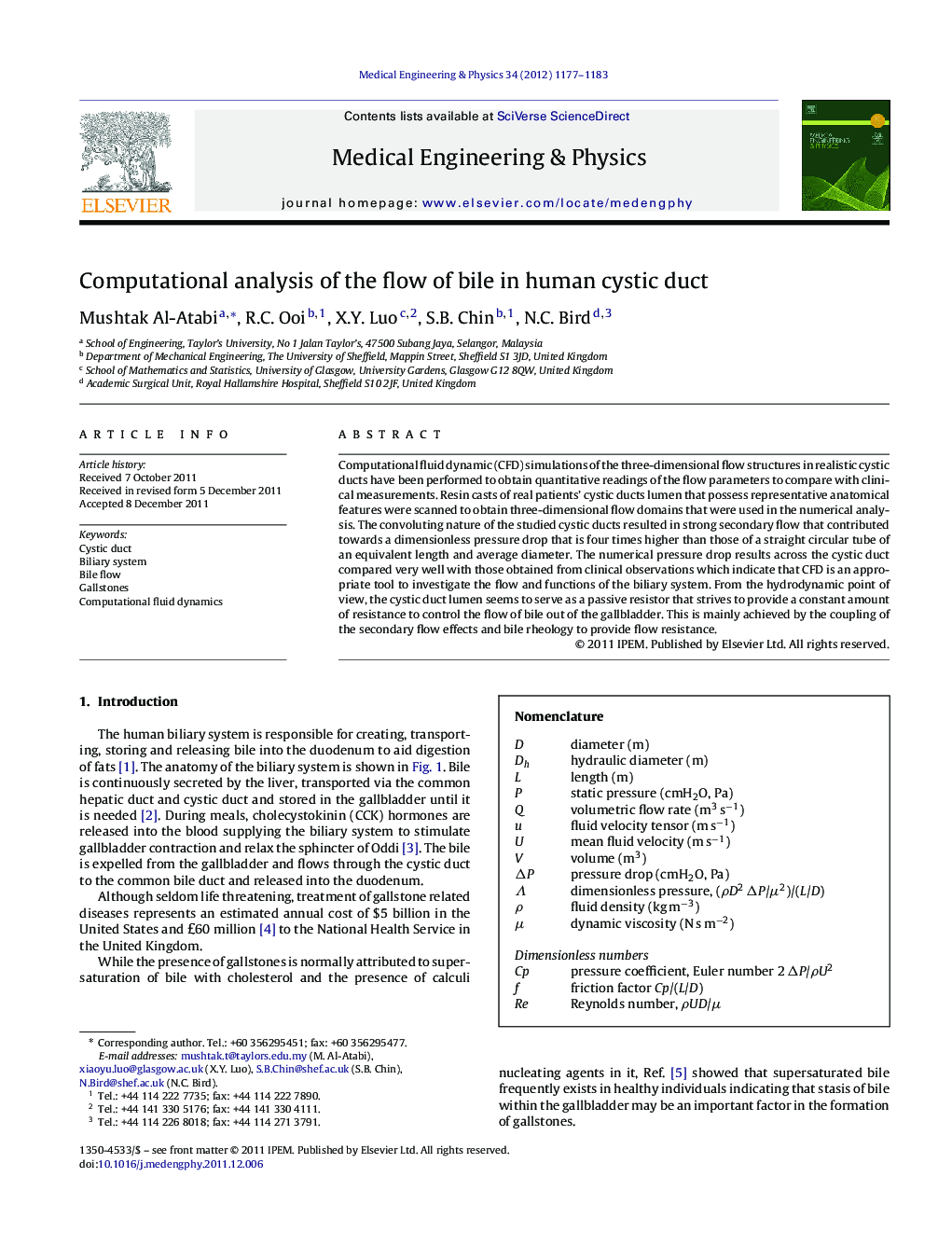| Article ID | Journal | Published Year | Pages | File Type |
|---|---|---|---|---|
| 876292 | Medical Engineering & Physics | 2012 | 7 Pages |
Computational fluid dynamic (CFD) simulations of the three-dimensional flow structures in realistic cystic ducts have been performed to obtain quantitative readings of the flow parameters to compare with clinical measurements. Resin casts of real patients’ cystic ducts lumen that possess representative anatomical features were scanned to obtain three-dimensional flow domains that were used in the numerical analysis. The convoluting nature of the studied cystic ducts resulted in strong secondary flow that contributed towards a dimensionless pressure drop that is four times higher than those of a straight circular tube of an equivalent length and average diameter. The numerical pressure drop results across the cystic duct compared very well with those obtained from clinical observations which indicate that CFD is an appropriate tool to investigate the flow and functions of the biliary system. From the hydrodynamic point of view, the cystic duct lumen seems to serve as a passive resistor that strives to provide a constant amount of resistance to control the flow of bile out of the gallbladder. This is mainly achieved by the coupling of the secondary flow effects and bile rheology to provide flow resistance.
